Fig. 13.1
Injection into the abscess cavity creates high pressures under which infectious material can project at unsuspecting observers. Skin nerve endings are not anesthetized
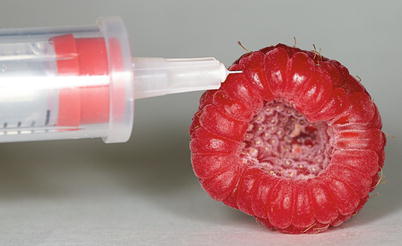
Fig. 13.2
Inject in a plane tangent to the abscess, not advancing much past the bevel, to infiltrate the superficial abscess wall
Solution 2
Perform a ring block prior to I&D.
Accidents Happen When
The lesion is not completely anesthetized. For example, the anesthetic is not injected around and under the lesion when expression of the contents by firm squeezing is planned.
Solution
The degree of anesthesia required is contingent upon the degree of anticipated manipulation of the area. If the lesion will merely be lanced and squeezed gently, then anesthesia just at the lesion’s apex is needed. If one contemplates more substantial squeezing, anesthesia should also be injected around and deep to the lesion.
Accidents Happen When
The hand holding the #11 blade is not stabilized to the patient, compromising fine control of the blade (Fig. 13.3).
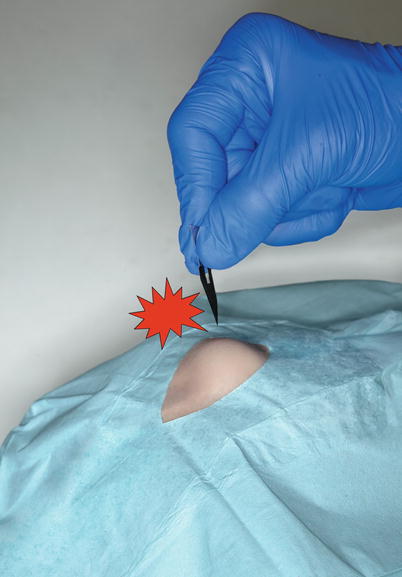
Fig. 13.3
Unstabilized blade can cut too widely or deeply
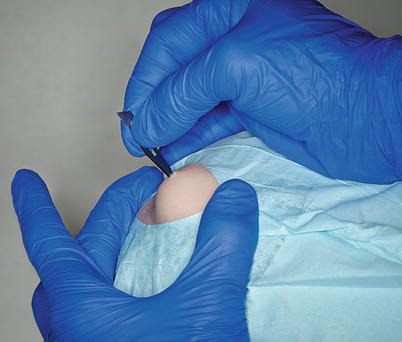
Fig. 13.4
The inferior hypothenar eminence of the hand holding the blade rests on the patient, allowing for precise blade handling. Splay the skin surrounding the abscess with the other hand
Accidents Happen When
The incision site through which egress of pus will occur is too short or too superficial as seen by the extent of blade entry (Fig. 13.4). The infectious material may remain under the inadequate incision. Access to loculations is impaired. As such, the abscess may recur, or pressure on the lesion to evacuate the pus may force pus deeper into healthy tissue rather than out the incision site.
Solution
Ensure that the incision is sufficiently extended and deep to allow for proper evacuation of the infectious material (Fig. 13.5).
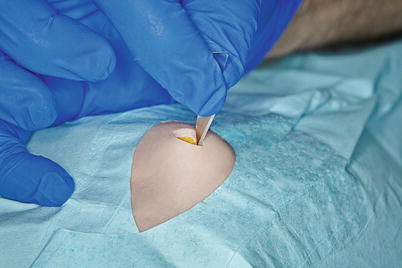
Fig. 13.5
Appropriately sized incision facilitates egress of pus
Accidents Happen When
A scalpel blade is used to free loculations blindly, causing unnecessary bleeding or nerve injury (especially in the groin and axillae). Uncontrolled bleeding may force extension of the incision.
Solution 1
Gently sweep the abscess cavity with a blunt tool, such as a sterile cotton tip applicator or closed forceps, to explore its extent and break up loculations (Fig. 13.6). If loculations are probed, further massage should be performed in an attempt to express more pus.
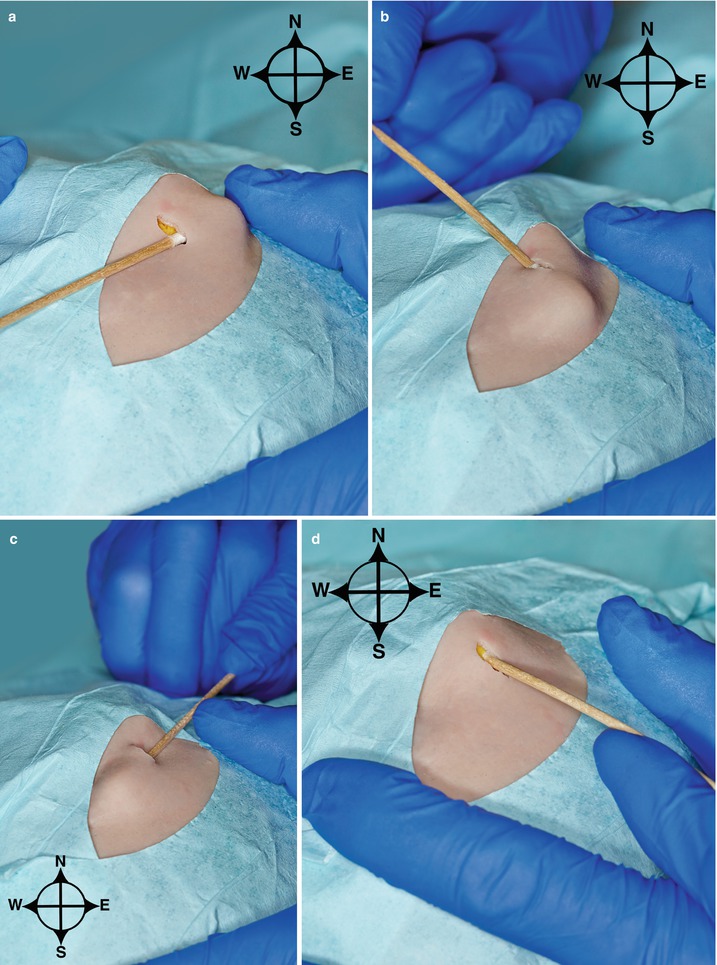
Fig. 13.6
Exploration of the abscess cavity with a cotton tip applicator. (a) North. (b) East. (c) South. (d) West
Solution 2
Consider extending the incision to allow for better visualization before probing blindly.
Solution 3
Do not explore aggressively past an initial attempt at drainage and just treat with antibiotics and warm compresses.
Accidents Happen When
Cyst contents are squeezed without eye protection or a mask.
Solution 1
Use a piece of clear plastic (e.g., Saran® wrap or the wrapper from the swab culture) to hold over the incision when squeezing the contents from of an abscess or cyst (Fig. 13.7).
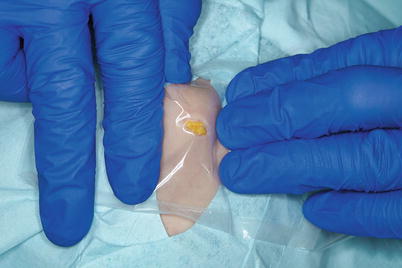
Fig. 13.7
A transparent plastic shield permits visualization of cyst contents and the outcomes of applying pressure to different areas of the lesion
Solution 2
If the lesion is particularly large, aspirating with a large-bore needle prior to making an incision can decrease both the cavity’s pressure and the subsequent mess.
Accidents Happen When
Only blood is obtained or an insufficient amount of purulent material is obtained on the culture swab. Inadequate incision or milking of the lesion may yield a false negative result.
Solution
Sample an area of frank pus where possible. If frank pus comes out where it did not come out prior to cavity exploration (i.e., if a suboptimal culture swab specimen was obtained earlier), the pus now present can be cultured with the same swab as used previously.
Accidents Happen When
An incised abscess is not adequately milked from all angles. Pockets of pus remain and the infection festers. Sometimes, the abscess pocket may extend laterally, superiorly, or inferiorly relative to the incision site.
Solution
Milk the lesion from all angles so that no pus is missed (Fig. 13.8




Stay updated, free articles. Join our Telegram channel

Full access? Get Clinical Tree








